The Hermitage Museum in St. Petersburg is one of the largest and most famous art and culture museums in the world. Founded in 1764 by Empress Catherine II, the museum was initially created as a private palace collection and gradually expanded to reach its current vast scale. The Hermitage is located within a complex of five historic buildings, primarily the Winter Palace, and houses approximately 3 million artworks, archaeological objects, and historical materials. The museum’s collection includes works by world-renowned artists such as Leonardo da Vinci, Rembrandt, Van Gogh, Monet, and Picasso.
The Hermitage Museum attracts attention not only with its art collection but also with its architectural magnificence. The Winter Palace, designed in the Baroque style, is one of the museum’s most impressive structures and reflects the history and grandeur of the Russian Empire. The museum offers visitors works spanning a wide period from Ancient Egypt to the Renaissance, and from the Middle Ages to modern art. Welcoming millions of visitors each year, the Hermitage is one of the most important symbols of both Russian culture and the world’s artistic heritage.
How much is the entrance fee to the Hermitage Museum?
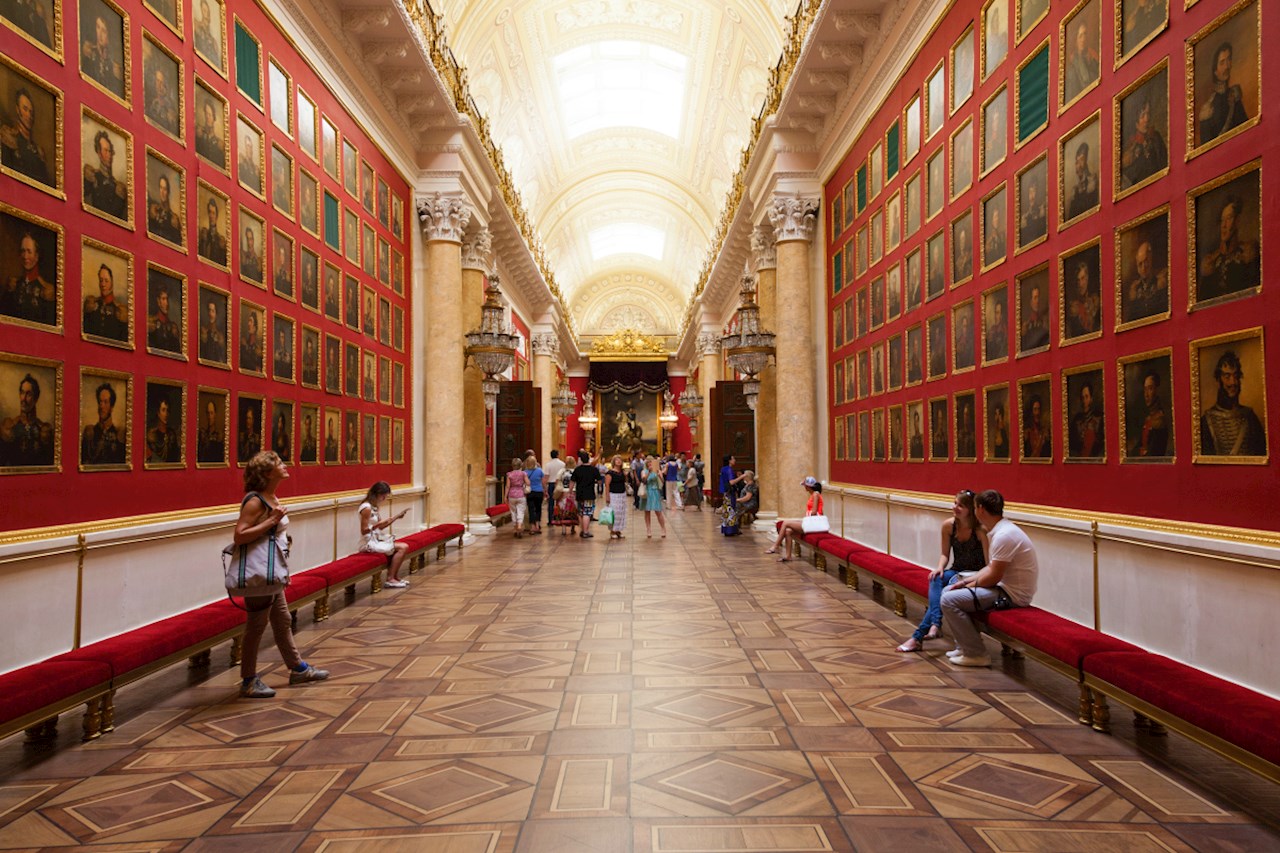
Entrance fees to the Hermitage Museum vary depending on the visitor’s age and the sections they wish to visit. As of 2025, the current ticket prices are as follows:
🎟️ Entrance Fees
- Adults: 500 Rubles for the Main Museum Complex
- Students and visitors over the age of 65: 300 Rubles
- Children under 18: Free of charge
Additionally, separate tickets can be purchased for different sections of the museum:
- General Staff Building: 500 Rubles
- Menshikov Palace: 600 Rubles
- Porcelain Museum: 300 Rubles
- Treasure Gallery (Gold and Diamond Rooms): Can only be visited with guided tours, and each costs 1,200 Rubles.
Is photography allowed in the museum?

Yes, photography is generally allowed in the Hermitage Museum, but certain rules must be observed:
📸 Photography Rules
- Flash usage is prohibited: Flash photography is strictly forbidden as it can damage the artworks.
- Tripod and monopod usage is prohibited: The use of equipment such as tripods or monopods is not allowed inside the museum.
- Photography may be prohibited in temporary exhibitions: In some temporary exhibitions, photography and video recording may be completely prohibited. Therefore, it is important to check the warning signs at the entrance of each exhibition area.
- Special permission is required for commercial photography: Written permission must be obtained in advance to photograph or record videos of the museum’s collection for commercial purposes.
✅ Recommendations
- Take photos without flash: Remember to turn off your camera’s flash.
- Do not use equipment: Avoid using equipment like tripods or monopods.
- Check the warning signs: Check the warning signs at the entrance of each exhibition area.
- Pay attention to staff instructions: Follow the instructions given by museum staff and comply with the rules.
By following these rules, you can make your visit more enjoyable and contribute to the preservation of the museum’s artworks.
What are the must-see artworks in the Hermitage Museum?

Leonardo da Vinci – Benois Madonna (1478–1480)
One of Leonardo’s early works, this painting depicts the Virgin Mary and Child Jesus. It is among the first works he completed independently.
Leonardo da Vinci – Madonna Litta
Depicting Mary and Jesus, this work stands out with Leonardo’s elegant details and composition.
Rembrandt – The Return of the Prodigal Son (1669)
One of Rembrandt’s most impressive religious paintings, this work is notable for its dramatic use of light and emotional depth.
Rembrandt – The Descent from the Cross (1634)
This painting, depicting the descent of Jesus from the cross, draws attention with Rembrandt’s play of light and shadow and figurative expression.
Michelangelo – Crouching Boy
One of Michelangelo’s unfinished marble sculptures, this work portrays a young boy in a crouching position and reflects the artist’s sculptural understanding.
Raphael – Madonna Conestabile
This painting, where Raphael depicts the Virgin Mary and Child Jesus with elegant brushstrokes, is one of the artist’s early works.
Titian – Flight into Egypt
One of Titian’s early works, this painting presents the Holy Family’s flight into Egypt within a pastoral landscape.
Antonio Canova – The Three Graces (1813–1816)
Inspired by Greek mythology, this marble sculpture reflects Canova’s neoclassical style with its elegant lines and details.
Jacques-Louis David – Sappho and Phaon (1809)
This work by French neoclassical painter David, focusing on mythological love, stands out with its detailed composition and emotional narrative.
Camille Pissarro – A Winter Morning on Boulevard Montmartre (1897)
This painting by Pissarro, one of the pioneers of Impressionism, vividly depicts the winter scenery of Paris streets with vibrant colors.
What days and hours is the museum open?
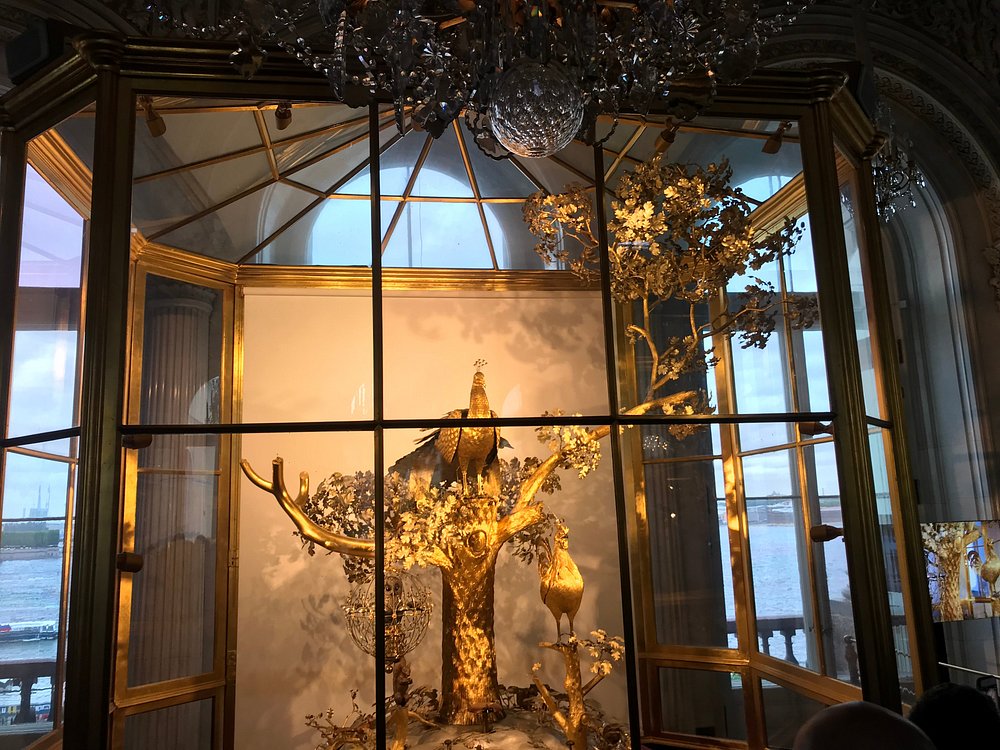
The Hermitage Museum is open to visitors on certain days of the week. However, opening hours and days may occasionally change. Therefore, it is recommended to check the museum’s official website for the dates you plan to visit.
🕰️ Opening Days and Hours
- Open Days: Tuesday, Thursday, Saturday, and Sunday
- Opening Hours: 10:30 AM – 6:00 PM
- Wednesdays and Fridays: 10:30 AM – 9:00 PM (Late closing)
- Closed Days: Closed on Mondays, January 1st, and May 9th.
Are guided tours available at the Hermitage Museum?
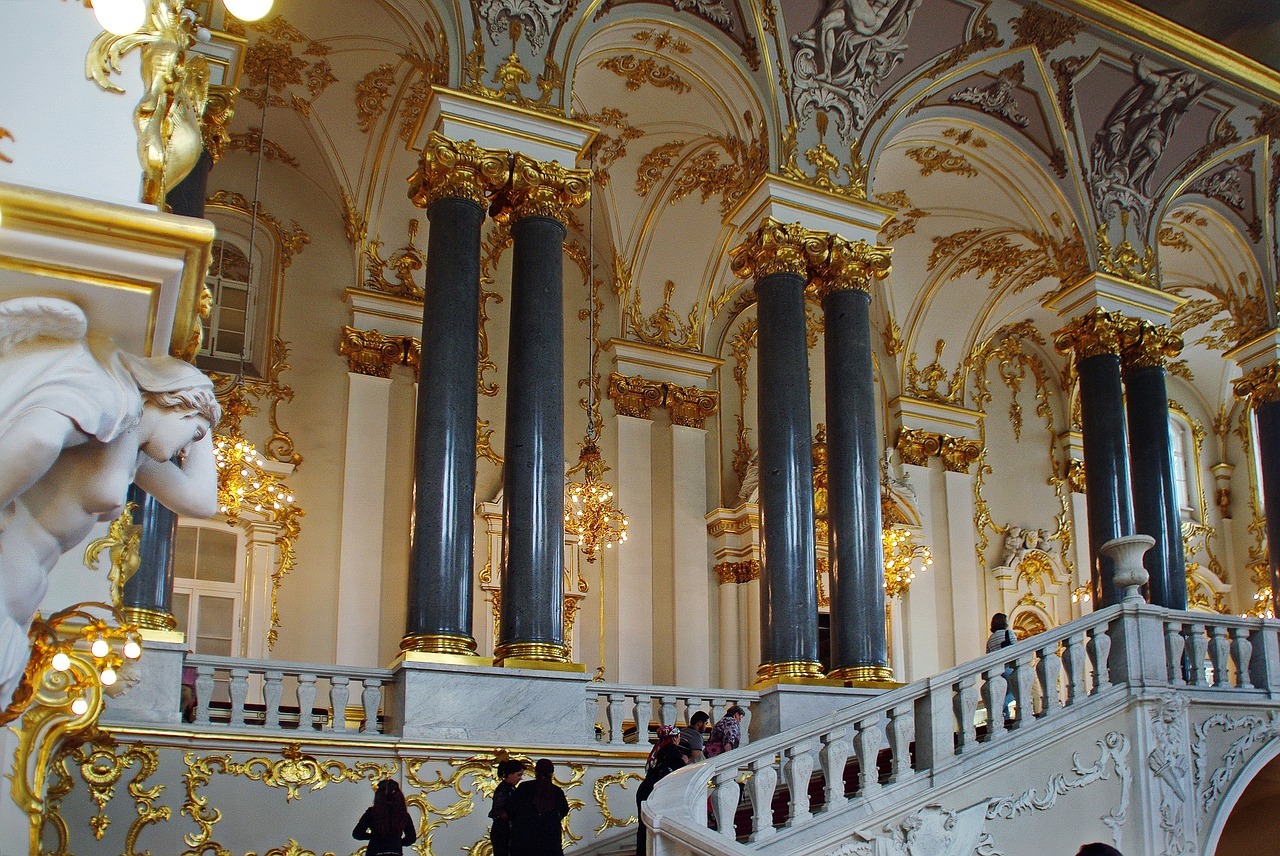
Yes, guided tours are available at the Hermitage Museum, and these tours offer visitors the opportunity to gain a deeper understanding of the museum’s rich collection.
🗣️ Guided Tours
- Language Options: Guided tours are generally offered in English. However, tours in different languages may also be available.
- Duration: Tours usually last between 2 and 3 hours and cover the most important sections of the museum.
- Content: During the tours, detailed information is provided about the works of famous artists such as Leonardo da Vinci, Rembrandt, and Van Gogh.
- Special Tours: Some special sections of the museum, such as the Gold Room and the Diamond Room, can only be visited through guided tours.
🎧 Audio Guides
- Languages: Audio guides are available in various languages and allow visitors to explore the museum at their own pace.
- Fee: The rental fee for an audio guide is 500 rubles, and a deposit of 2000 rubles or an ID must be left when taking the device.
🎟️ Tickets and Reservations
- Ticket Purchase: Tickets for guided tours can be obtained through the museum’s official website or at the ticket counters at the museum entrance.
- Advance Reservation: It is recommended to purchase your tickets online in advance to avoid long queues during busy periods.
Are there activities for children at the museum?

Yes, the Hermitage Museum in St. Petersburg offers various activities and educational programs for children. The museum’s Youth Education Center organizes special programs for children and young people. These programs include art history lessons, contemporary art exhibitions, workshops, and meetings with museum curators.
Especially designed for children aged 9 to 11, the “Museum and Little Museum Workers” program aims to teach children how a museum operates and the roles of museum staff. As part of this program, children have the opportunity to meet important figures such as the museum director, restorers, and curators.
Additionally, within the scope of the Hermitage Museum’s volunteer services, games and competitions are organized for children. These activities allow children to explore history and culture in a fun way.
Which artists’ works are displayed in the Hermitage Museum?

The Hermitage Museum houses one of the largest and richest art collections in the world. The museum holds works by many famous artists, spanning a wide range from the Renaissance to modern art. Below is a list of some important artists whose works are exhibited in the museum, along with their notable pieces:
🎨 Important Artists Whose Works Are Displayed at the Hermitage Museum
Leonardo da Vinci
- Madonna Litta
- Benois Madonna These two works by Leonardo stand out with the artist’s elegant compositions and detailed craftsmanship.
Rembrandt
- The Return of the Prodigal Son
- Danaë These works by Rembrandt are notable for their dramatic use of light and deep emotional expression.
Vincent van Gogh
- The Night Café This work by Van Gogh draws attention with the artist’s characteristic brushstrokes and color palette.
Claude Monet
Camille Monet in the Garden This piece by Monet is one of the important examples of the Impressionist movement.
Pablo Picasso
Bust of a Woman This work by Picasso reflects traces from different periods of the artist’s career.
Henri Matisse
Dance This piece by Matisse is known for its vibrant colors and dynamic composition.
Paul Cézanne
Apples and Oranges This work by Cézanne is notable for the artist’s depictions of nature and use of color.
Edgar Degas
Place de la Concorde This work by Degas stands out with its depiction of modern city life.
Pierre-Auguste Renoir
Dancing Couple This piece by Renoir is one of the elegant examples of the Impressionist movement.
Paul Gauguin
Tahitian Woman This work by Gauguin is known for its exotic themes and use of color.
The Hermitage Museum’s collection also includes works by masters such as Michelangelo, Raphael, Titian, Rubens, Vermeer, Caravaggio, El Greco, Goya, Canaletto, Frans Hals, Watteau, Jacques-Louis David, and many others. With approximately 3 million artworks, the museum holds the world’s largest painting collection.
How many works are in the museum’s collection?\

The Hermitage Museum has a massive collection consisting of approximately 3,150,000 items. This makes it one of the largest and most comprehensive art and culture museums in the world. Only a small portion of the collection is permanently exhibited; the remaining works are kept in the museum’s various storage facilities.
🗂️ Distribution of the Collection by Categories
The Hermitage Museum’s collection is divided into different categories:
- Numismatic Objects (Coins and Medals): 1,125,975 items
- Archaeological Artifacts: 808,695 items
- Graphic Works (Drawings, Engravings): 625,889 items
- Applied Artworks (Ceramics, Furniture, Textiles, etc.): 358,938 items
- Photographs: 60,521 items
- Paintings: 17,165 items
- Weapons and Armor: 14,016 items
- Sculptures: 12,814 items
- Documents: 2,853 items
- Technology and Technical History Objects: 2,609 items
- Rare Books: 360 items
- Printed Materials: 295 items
- Other Objects: 148,133 items
This diversity shows how rich the Hermitage Museum’s collection is in the fields of art, history, and culture. Visitors have the opportunity to explore a wide range of works, spanning from ancient times to the modern era.
Are there food and beverage areas in the museum?
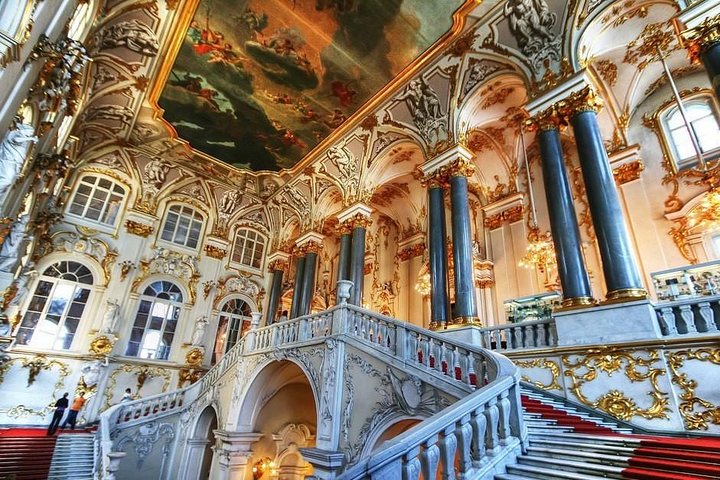
Yes, there are areas in the Hermitage Museum where visitors can rest and have food and drinks. The Hermitage Cafe, located within the museum complex, is a restaurant offering dishes from European and Russian cuisine. According to reviews on Tripadvisor, this cafe offers affordable and vegetarian-friendly options.
Additionally, there are various cafes and restaurants around the museum. For example, Blok Bar & Restaurant offers flavors from Asian and European cuisine, while Palkin Restaurant combines traditional Russian and Italian cuisine.
How to get to the Hermitage Museum?
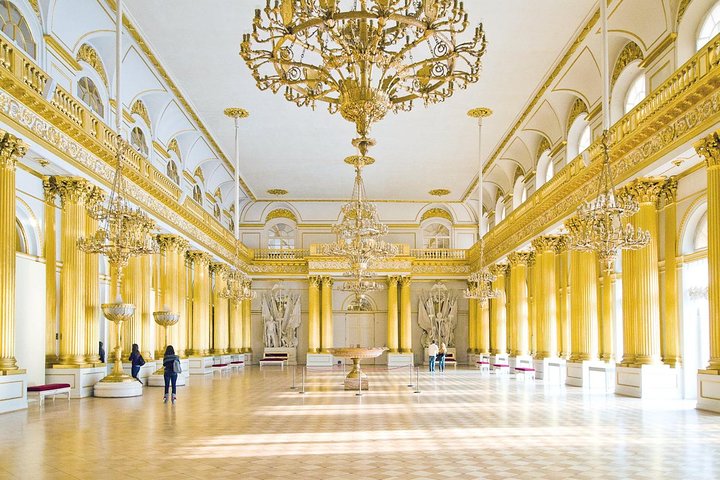
The Hermitage Museum is located in the center of St. Petersburg, on the banks of the Neva River, and is one of the city’s most important tourist attractions. It is very easy to reach the museum, and there are various public transportation options available.
🚇 By Metro
- Admiralteyskaya Station: This is the closest metro station to the museum. After exiting, it is about a 5–7 minute walk to Palace Square and the main entrance of the museum.
- Nevsky Prospekt and Gostiny Dvor Stations: These stations are also within walking distance of the museum and offer alternative routes.
🚌 By Bus and Trolleybus
Some bus and trolleybus lines that stop near the Hermitage Museum are:
- Bus Lines: 7, 10, 24, 191
- Trolleybus Lines: 1, 7, 10, 11
These lines stop around Palace Square (Dvortsovaya Ploshchad), where the museum is located.
🚕 By Taxi and Ride-Sharing Services
In St. Petersburg, it is possible to call a taxi using apps such as Yandex.Taxi and Uber. This option is particularly suitable for those traveling in groups or those who prefer more comfortable transportation.
✈️ From the Airport
To reach the city center from Pulkovo Airport in St. Petersburg:
- Bus: You can take buses number 39 or 39Ex to Moskovskaya metro station and from there continue by metro to Admiralteyskaya station.
- Taxi: It is possible to go directly from the airport to the museum by taxi.
